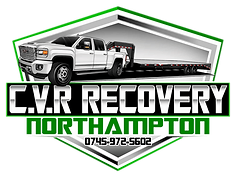Towing a vehicle is often an unexpected occurrence, whether you find yourself in need of a tow or assisting someone whose car has broken down. It’s crucial to understand how to tow a car safely and legally when the situation arises.
However, towing a car is not a straightforward task and carries inherent risks. If you are unsure in any aspect of towing, it is advisable to refrain from attempting it and instead seek professional assistance. Towing over long distances should be avoided, as it should be reserved for emergency situations.
For those confident in their ability to tow a car independently, familiarising yourself with a detailed car towing guide is essential. This guide will provide you with the knowledge and assurance to handle the task effectively.
Towing Rules
Here are essential guidelines to remember when towing a vehicle:
Rule 1:
Regulations concerning towing vary based on your driving experience. If you obtained your driver’s license after January 1st, 1997, and haven’t passed a specific car and trailer test, there are restrictions to consider.
Rule 2:
A car being towed must prominently display an ‘On Tow’ sign at the rear. The driver operating the vehicle towing must hold a valid driver’s license.
Rule 3:
Even when a vehicle is broken down, if its wheels touch the road during towing, it must be insured. This precaution is essential to protect against potential accidents during transit. Additionally, the vehicle must be taxed and have a valid MOT where applicable.
Rule 4:
Towing a vehicle on the motorway is prohibited unless the breakdown occurred on itself. The high-speed environment poses significant risks to both the towing vehicle and other road users.
Rule 5:
When vehicles are connected solely by a rope or chain, the maximum permissible distance between them is 4.5 meters.
Rule 6:
The connecting rope or chain must be clearly visible to other road users, if the distance between vehicles exceeds 1.5 meters. This can be achieved by using a brightly coloured cloth or similar marker tied at the midpoint.
Rule 7:
If towing occurs in low light conditions or at night, the broken-down vehicle must have its lights illuminated as it would under normal operating conditions.
Adhering to these regulations ensures the safety of all parties involved in the towing process and promotes responsible use of roadways ay out the untangled tow.

Do’s and Don’ts of Towing a Car
For the Towing Driver
- Ensure the tow rope remains taut, which requires coordination with the driver being towed.
- If using a towing pole, avoid sudden braking or acceleration to prevent damage to the pole or vehicles.
- Maintain a controlled speed of approximately 15 mph and apply throttle and brakes smoothly. In manual cars, engage the clutch gently when starting.
For the Driver Being Towed
- Ensure your vehicle is in neutral with the handbrake released.
- Observe the towing vehicle for hand signals and monitor its brake lights and turn signals.
- Maintain light pressure on the brake pedal to keep the tow rope stiff without pumping it, as this could strain the rope and both vehicles’ drivetrains.
- Anticipate upcoming road conditions by observing the path ahead of the towing vehicle.
- Switch off the fan, radio, and interior lights, but keep the ignition switched on to prevent the steering wheel from locking.
Different Ways of Towing a Car
Method 1: Using Tow Straps
- Before using a tow strap, verify local regulations to ensure it’s permitted.
- Arrnage the untangled tow strap in front of the car needing towing assistance.
- Examine the tow strap thoroughly for any signs of damage.
- Identify and use the recovery points on both vehicles’ frames.
- Attach the tow strap securely through the recovery points of the broken-down vehicle.
- Park the towing vehicle in front of the broken-down vehicle, aligning them for a straight pull.
- Connect the tow strap to the towing car’s hitch.
- Gradually pull the towing vehicle forward to tighten the strap, ensuring it’s not overly strained.
- Place a blanket or jacket over the tow strap to mitigate risk if it snaps.
- With the broken-down vehicle in neutral, tow it slowly and cautiously, maintaining control and keeping a short distance.
- Once done, disconnect the tow strap promptly.
Method 2: Using a Tow Dolly
- Attach the tow dolly securely to the towing car’s recovery point.
- Cross and secure the wiring leads and safety chains.
- Place the broken-down vehicle and dolly, tow vehicle on the same level.
- Carefully drive the broken-down vehicle onto the tow dolly.
- Use the dolly’s wheel straps and safety chains to secure the vehicle in place.
- Ensure the parking brake of the broken-down car is disengaged.
- Be aware of increased braking and acceleration distances while towing.
Method 3: Using a Trailer
- Attach the trailer securely to the towing vehicle’s hitch.
- Ensure the position of trailer and the broken-down vehicle in a parallel pattern.
- If necessary, use ramps to drive the broken-down vehicle onto the trailer.
- Tighten ratchet straps over each wheel and with car’s frame, protect safety chains.
- While driving with a trailer, anticipate acceleration and longer braking.
Concluding Remarks
By following the methods and the rules mentioned above, you can safely tow a vehicle, depending on your specific needs and the equipment available. Always prioritise safety and compliance with local laws during the towing process.

